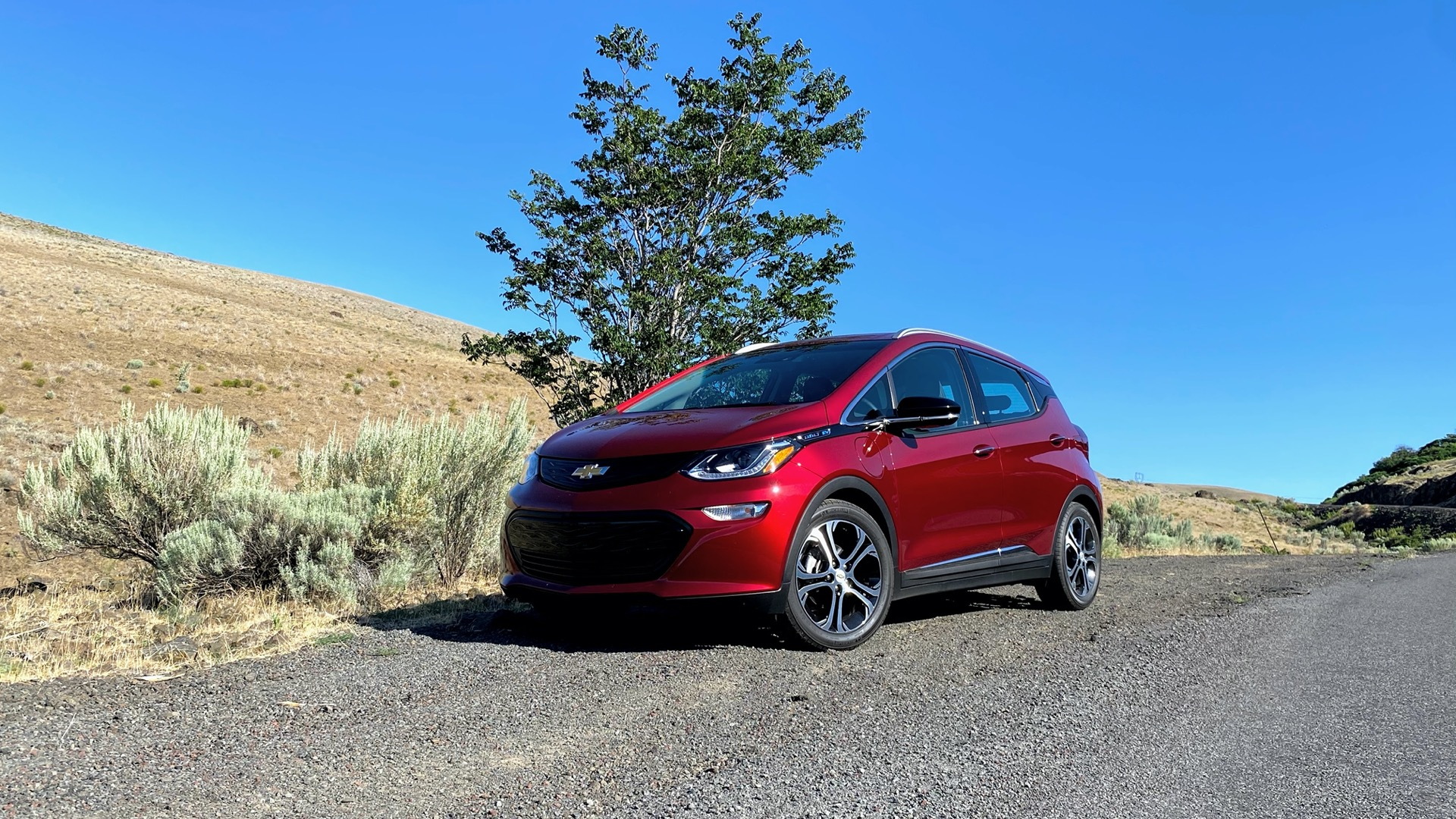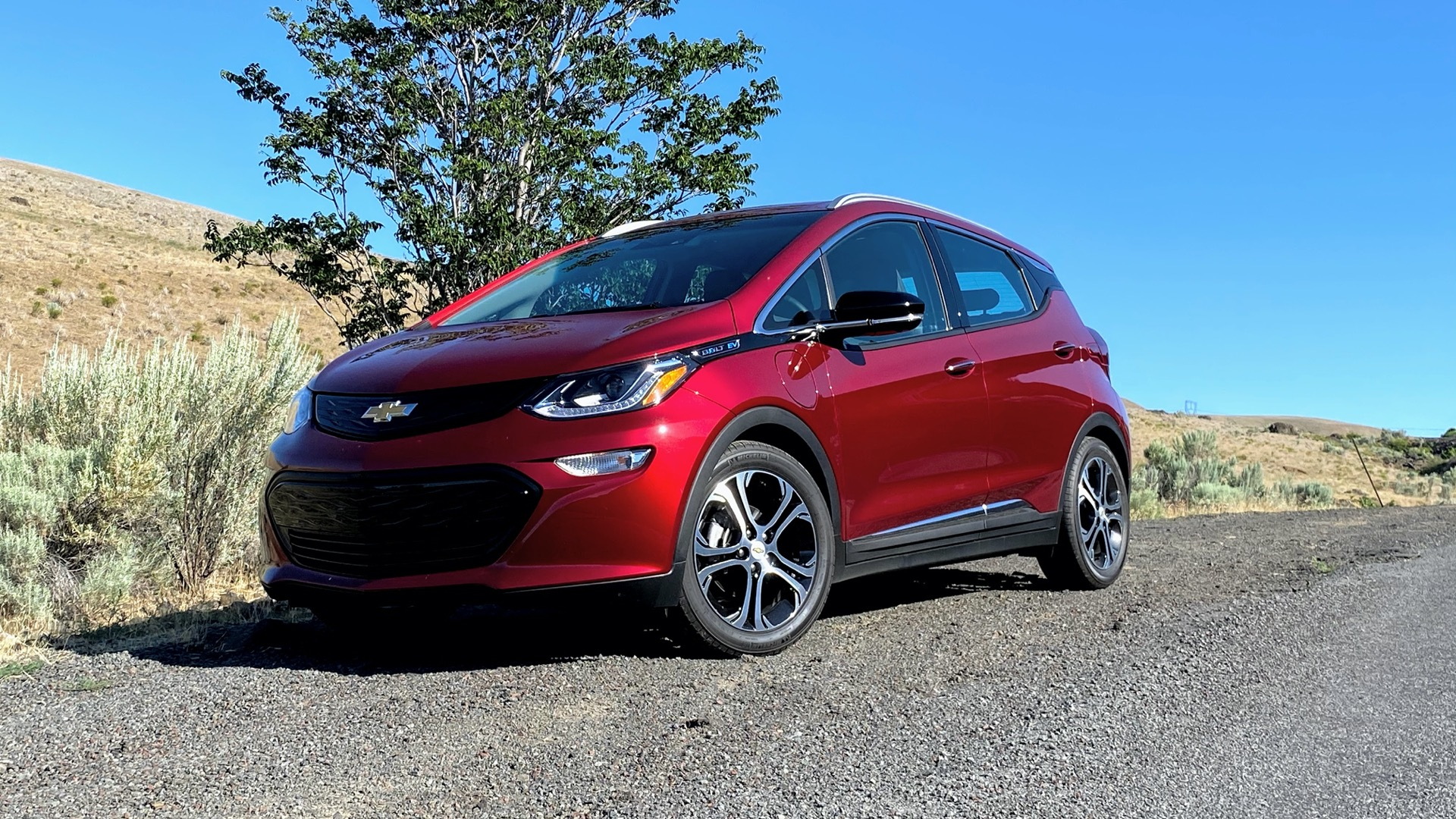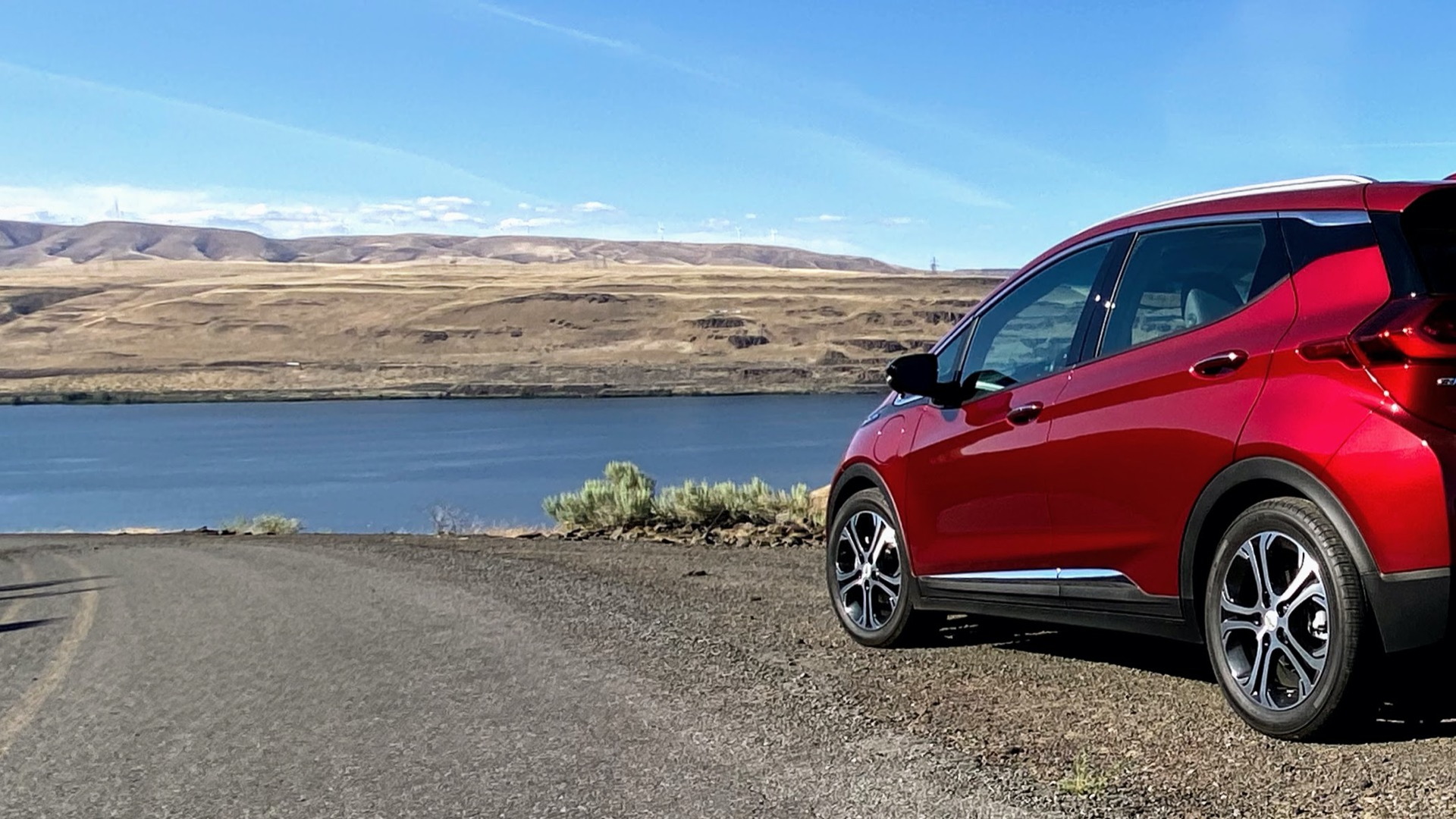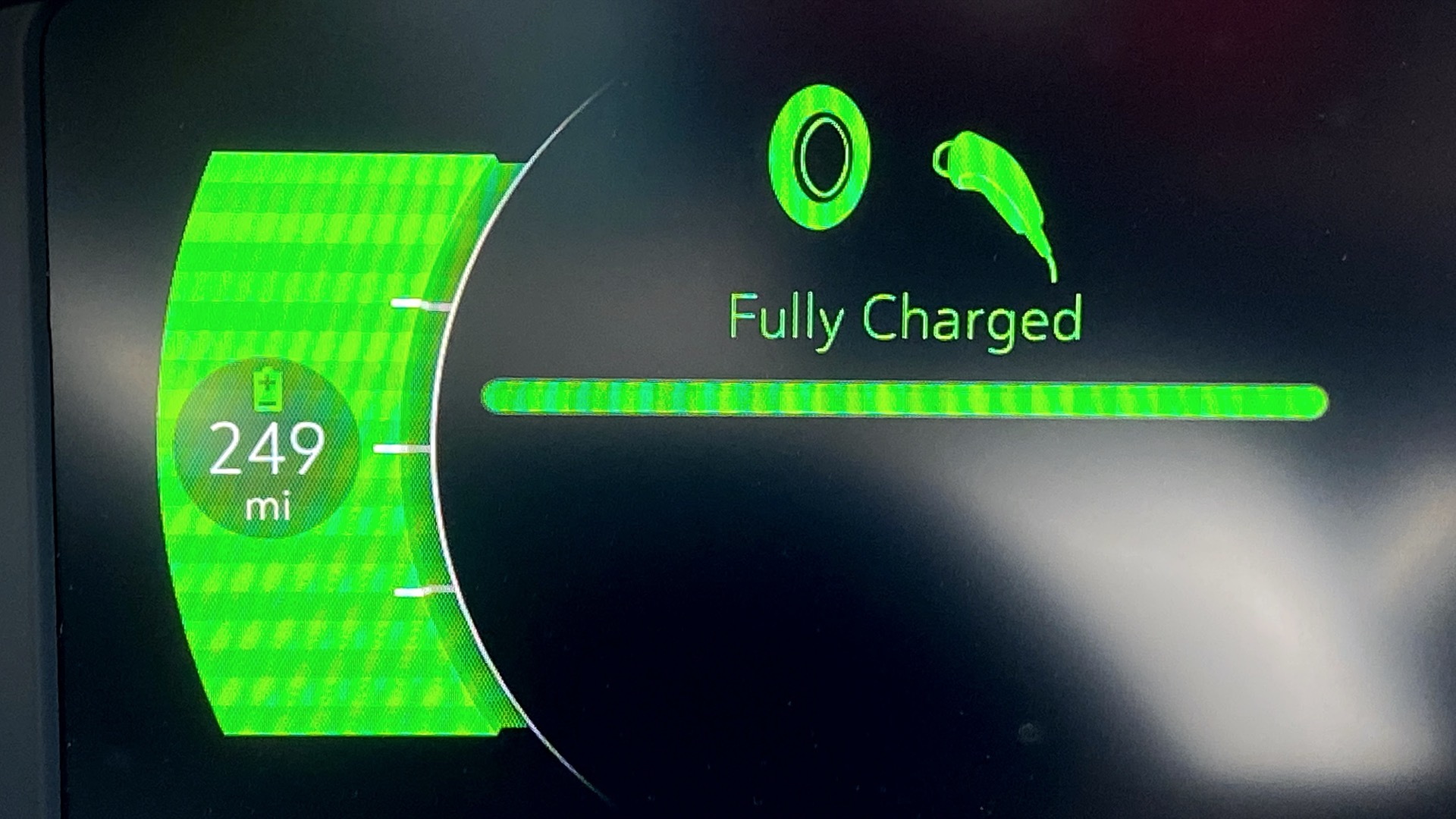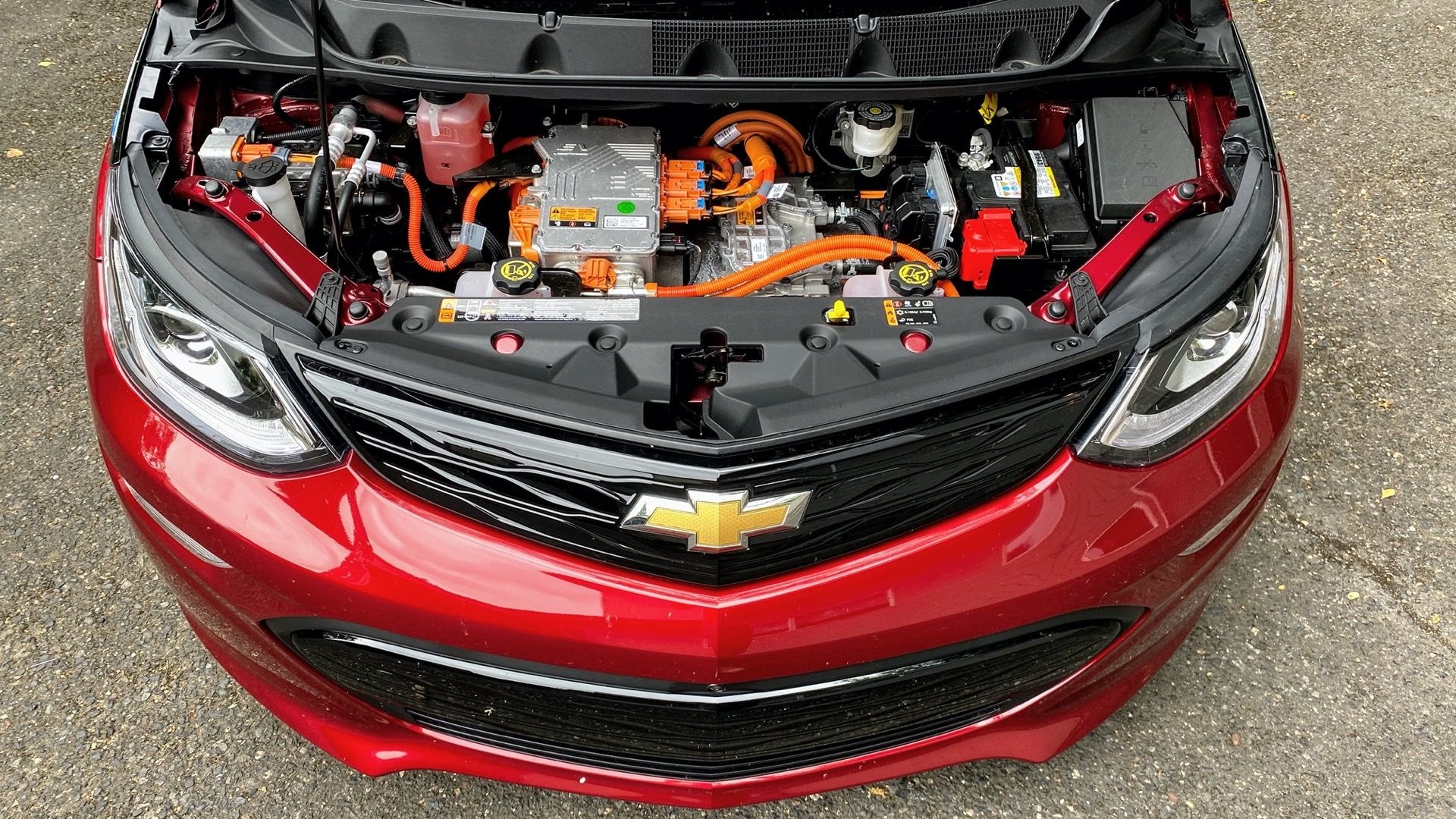We discuss much about driving range in electric cars—not just because a high range rating is a top priority to EV shoppers, but because it’s something you need to consider in a way you might never have for gasoline vehicles.
Factors that can dramatically affect driving range include how fast you’re driving, outside temperatures, or how much you’re using climate control. And trip computers do a decent job of recalibrating range estimates based on these details.
But understanding how far you can go to the next charging station is more complicated than that. Sometimes, it’s just a matter of which way the wind blows.
That was the case when I revisited a 2020 Chevrolet Bolt some months back—primarily to get a good baseline and some lasting impressions ahead of the arrival of the 2022 Chevy Bolt EV and EUV models this spring or summer. We’ve already posted a review of the 2022 Chevy Bolt EUV.
First off, I reacquainted myself with the Bolt EV with a few days’ worth of errands around town—a near equal mix of freeway driving, 25-30 mph city streets with frequent stops, and bigger boulevards with conditions in between. For nearly 80 miles I averaged more than 3.7 miles per kwh—with the average hitting 3.9 mi/kwh for the first 57 miles that excluded the freeway.
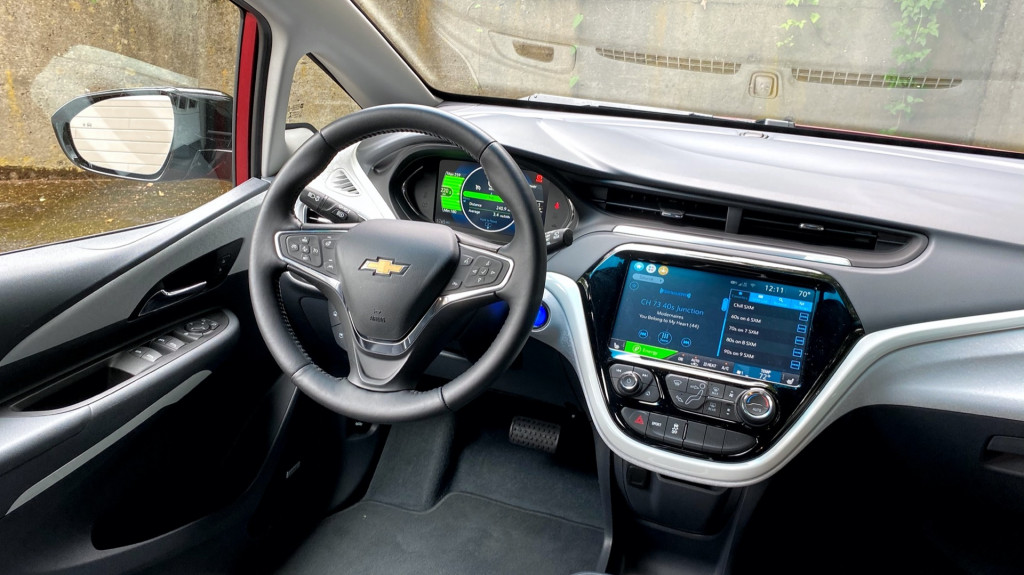
2020 Chevrolet Bolt EV review update - Portland OR
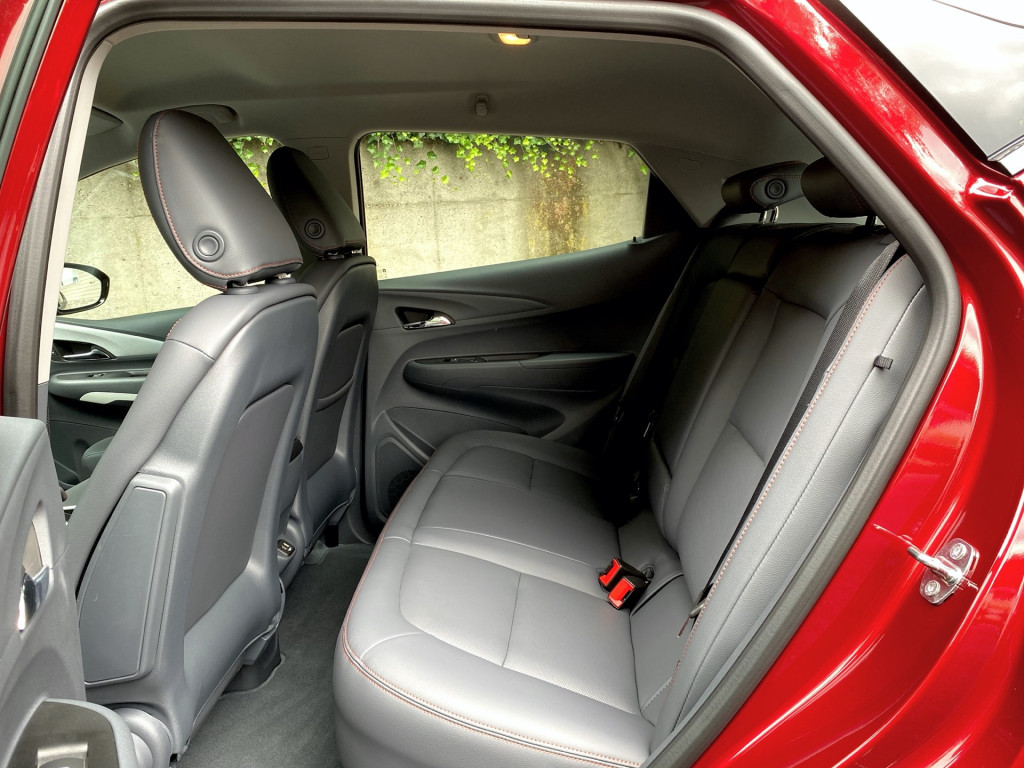
2020 Chevrolet Bolt EV review update - Portland OR
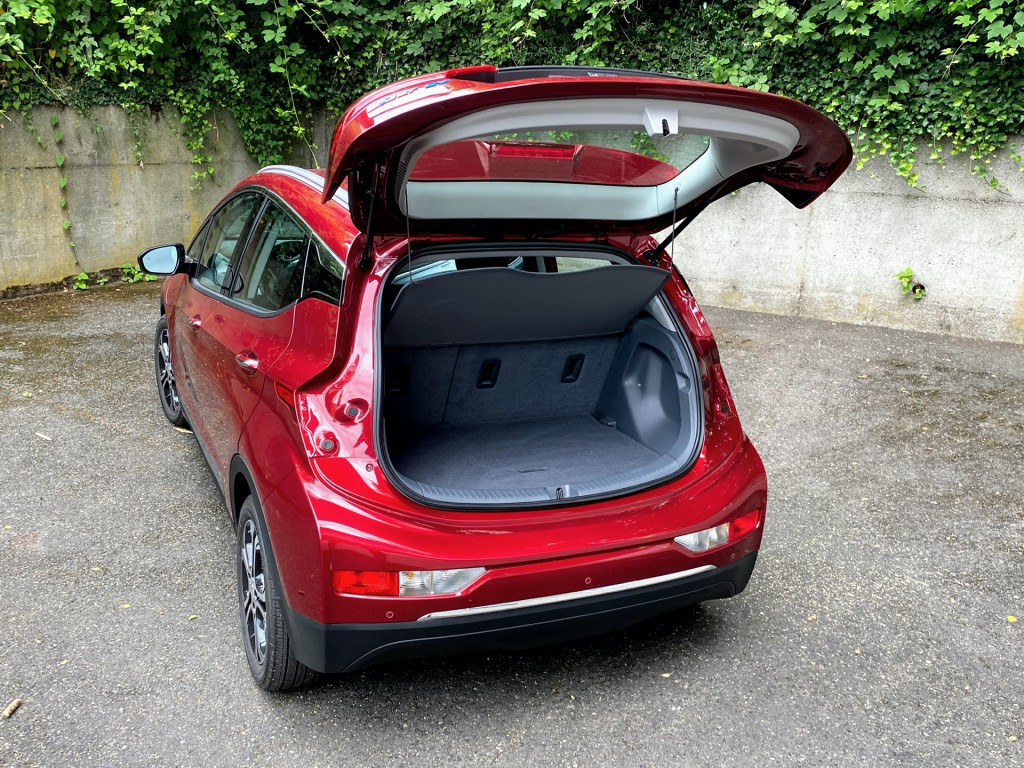
2020 Chevrolet Bolt EV review update - Portland OR
In the city, the Bolt EV is great at selling all-electric. The front-drive hatchback, with 200 horsepower and 266 pound-feet of torque, feels almost comically quick off the line, then quick enough up to highway speeds. You sit high within the tall hatchback, with a good view outward, in an almost van-like position, with impressive back-seat space for the exterior measurements. Steering is precise and light, and brakes show off GM’s expertise with blending regeneration and pads for satisfying, neat stops. Chevy calls the ‘L’ mode on the shifter a one-pedal driving setting; although it’s not quite that, it’s the mode to use when you’re in low-speed stop-and-go—with a Regen on Demand paddle on the left offering a bit more grab if you want it.
Out on the highway, the Bolt EV takes on a different personality—one that’s not nearly as at ease with itself. Cabin noise is an issue on some surfaces, the ride can seem unduly bouncy over road seams, and straight-line tracking isn’t on par with that of other EVs—most of them more premium, admittedly.
But back to the wind. To get an idea of highway range, I planned a little trip out from Portland into the Columbia Gorge on a calm, warm day (about 70 degrees) that was shaping up to be close to ideal for range.
The format: I’d leave fresh off a charge to 100% and set the cruise control to 70 mph and the climate control to 70 degrees, out and back on I-84, turning around about halfway.
I turned around after covering 118 miles, with the trip computer still showing a 56% state of charge and estimating 138 miles remaining.

2020 Chevrolet Bolt EV review update - Portland OR
The weather had been calm as I headed out from Portland, leaving a slight descent for the return in this relatively level route. But it became clear I’d picked up an 8-10 mph tailwind partway through my trip—around Hood River—underscored by some rapid and disconcerting recalculations, which is unusual for a system that most often acts as a trusted voice of reason versus range anxiety.
The Bolt EV's readouts helped understand that I’d been getting a bit of a boost all along. While on the way out the Bolt EV had been using in the vicinity of 21-23 kw at 70 mph, that suddenly changed to 27-29 kw.
Luckily I was in Oregon, on a major highway. So there was an unplanned charging stop. At the Hood River Electrify America station, I put myself in the position of someone who was on a tight schedule and just needed enough charge to make it back. So I plugged the 150-kw CCS connector in for just 10 minutes—reaching a peak charge power of 54 kw and bringing my state of charge from 18% to 32% in that time (with 9.5 kwh added).
That did it. I resumed my 70-mph trip, and since the Bolt EV’s system didn’t see that as a full charge, it kept on tallying energy, adding up to 70.9 kwh for the 241-mile trip—averaging 3.4 miles per kwh for the windy highway run.
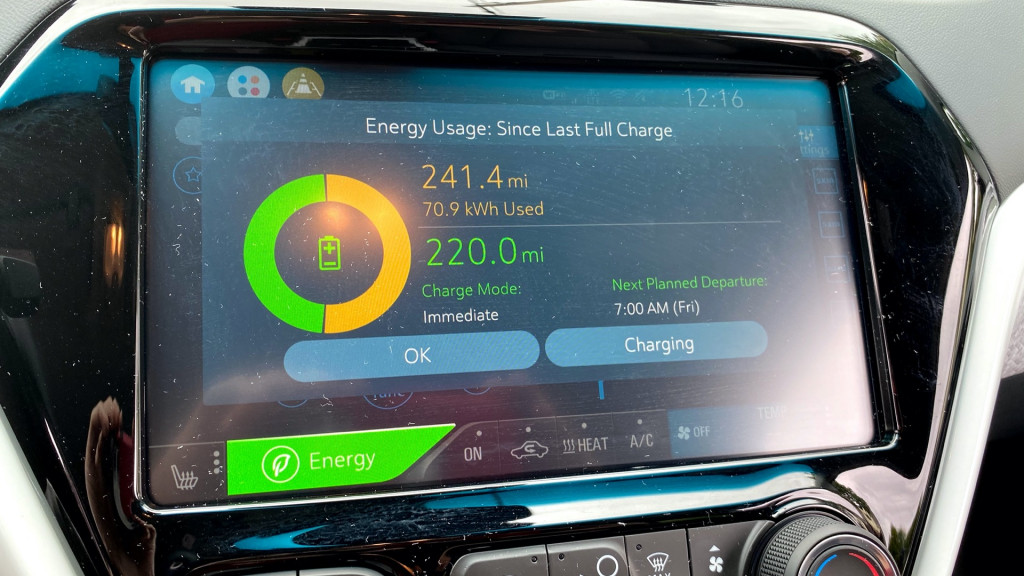
2020 Chevrolet Bolt EV review update - Portland OR
That amounts to a highway range of about 220 miles given the Bolt EV’s reported usable capacity of as much as 65 kwh.
Takeaways? The Bolt EV is a perfect car for those with tangled commutes through metro areas. But the Bolt EV isn’t especially aerodynamic, and aerodynamics are a big piece of highway range. While this test reminded us that the Bolt EV remains competitive on range, the 2022 model isn't likely to be vastly different in real-world use.

2020 Chevrolet Bolt EV review update - Portland OR
While aero makes the same difference as it would in a combustion vehicle of the same weight, the consequences are very different. Yes, you might need to stop at a gas station sooner, but for an EV, those stops need to be very carefully planned.
Since many of the long-range EVs available today are taller crossovers, we wonder if many shoppers understand that range estimates are exactly that—estimates, based on factors the car is aware of. Being able to include more weather details—like wind speed—in route planning would be a big step forward.
Until then you just need to make your own personal note, on highway trips, of which way the wind blows.
